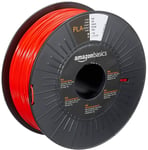What's Special?
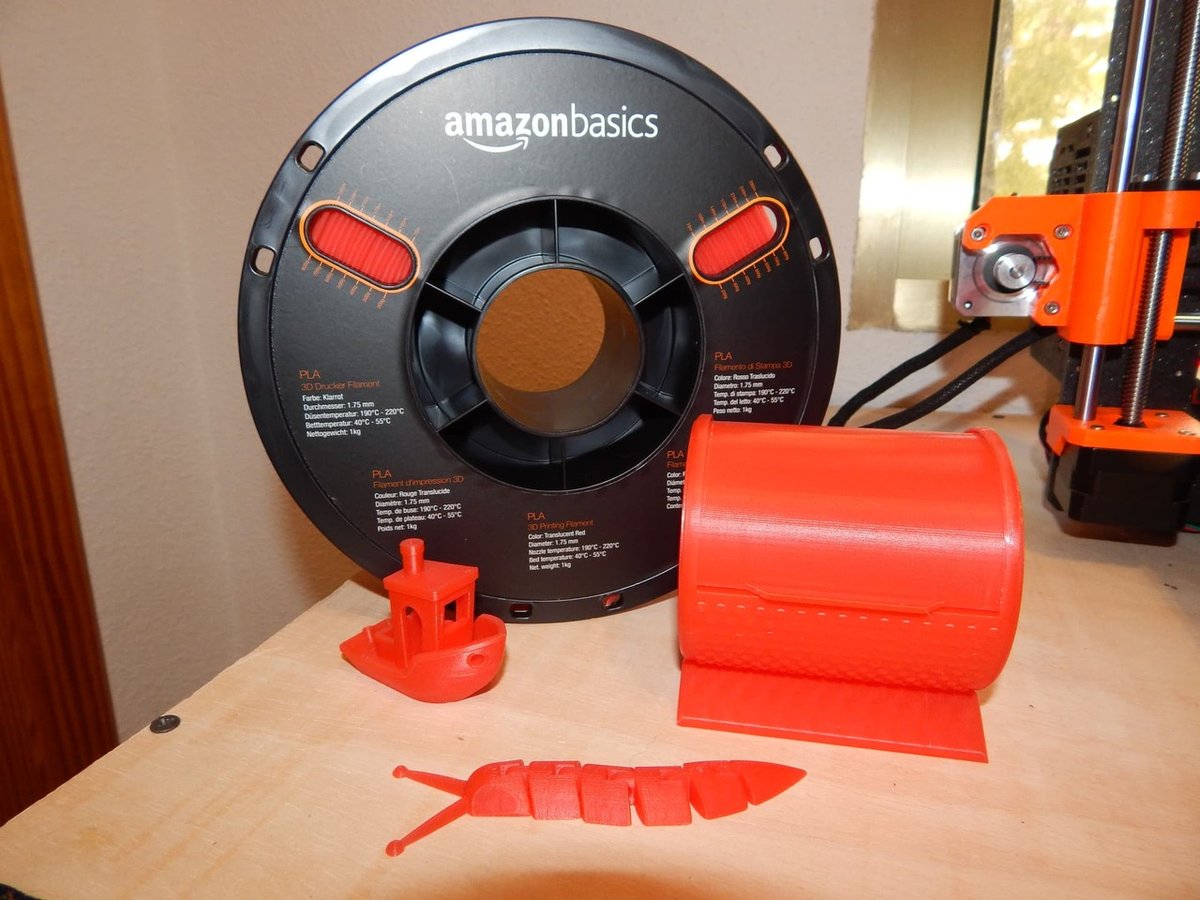
Pretty much everybody has heard of Amazon, the online retail giant. Recently, they have begun offering their own brand of filaments for 3D printing, marketing towards the everyday consumer and hobbyist.
The advantages of such a product are obvious: Amazon is a global company and well-known for its reliability. As the filament is their own product, it will always boast the impressively fast Prime shipping, and if you don’t like it, the Amazon return service is legendary. It’s also backed by an Amazon 1-year limited warranty.
As for the product itself, well, Amazon hasn’t skimped on quality. Boasting a plus or minus 0.05-mm precision, and “specially engineered to reduce jamming”, this PLA filament sounds quite impressive right off the bat. Also, the spool itself has a very handy gauge on the side that allows you to approximate how much filament you have left – both in meters and by weight.
The Amazon Basics PLA is offered in 10-meter samples and 1-kg spools, in both 1.75-mm and 3-mm diameters. There are a wide variety of colors available, from which we choose a spool of Translucent Red.
The Verdict
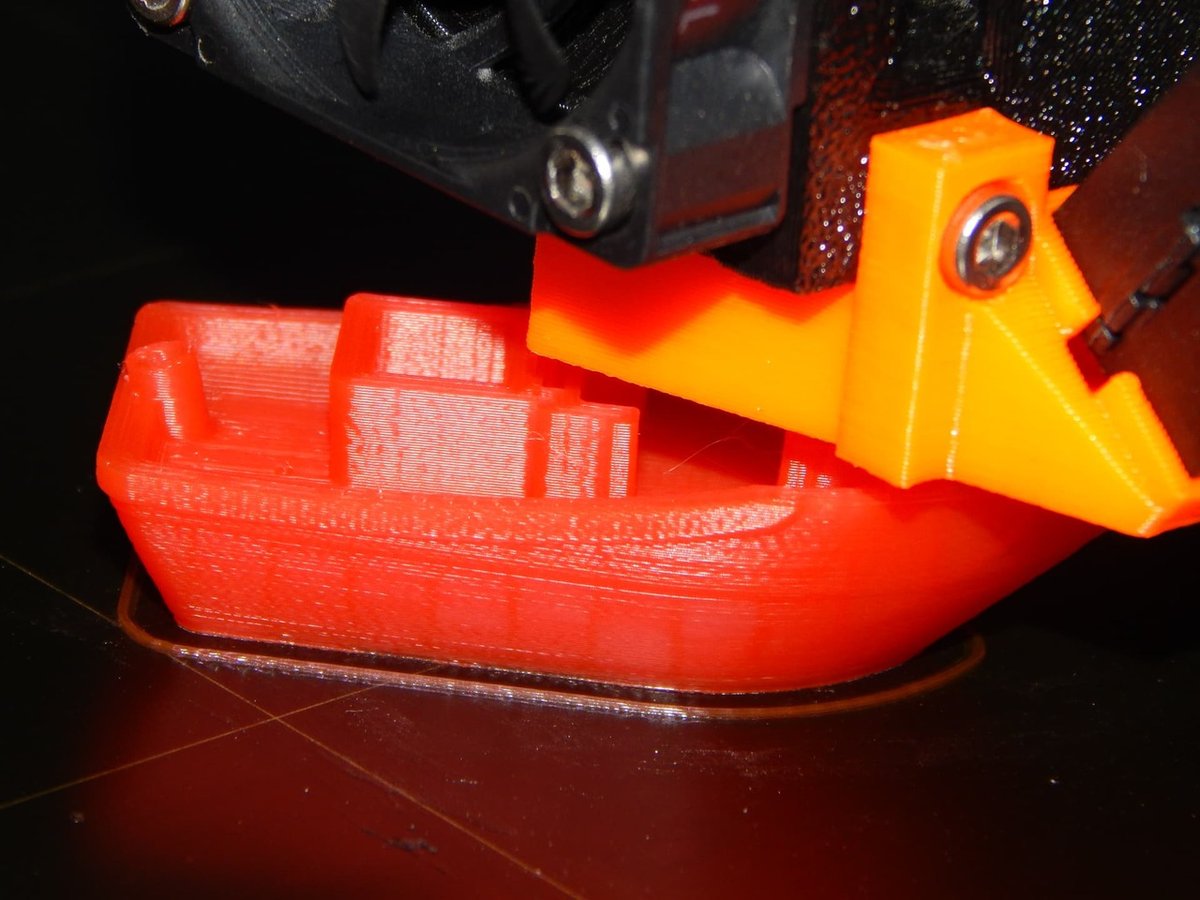
We tested out the AmazonBasics PLA on an Original Prusa i3 MK3. The spool came nicely packaged in a recyclable cardboard box. It was sealed in a plastic bag with a silica desiccant pouch to avoid damage from humidity. The bag was resealable, so the filament can be safely stored when not in use.
Our test prints were all completely successful, and the prints have an interesting finish, halfway between matte and shiny, and with a smooth but not slick feel to the surfaces.
The color is a vibrant watermelon red, and true to the description, translucent. We noticed that while light does pass through, it is quite diffused and varies a lot based on the thickness, which would make this perfect for lithophanes (if you wanted your pictures in watermelon red, that is).
Test #1: 3DBenchy
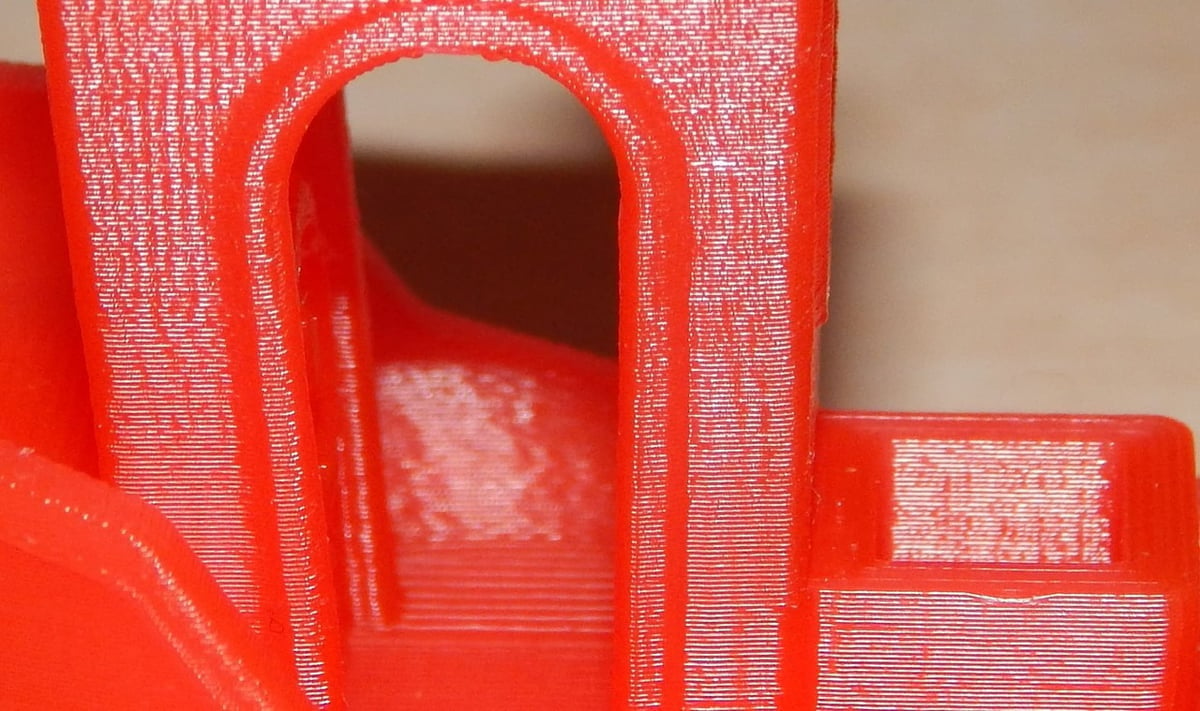
Our first test print was the ubiquitous 3DBenchy. There were no obvious issues with quality, aside from some very slight, almost unnoticeable stringing between details.
A look at a close-up photograph shows that the layers are very consistent and adhere to each other well. The dimensions are accurate and the details turned out very well.
Test #2: Articulated Slug
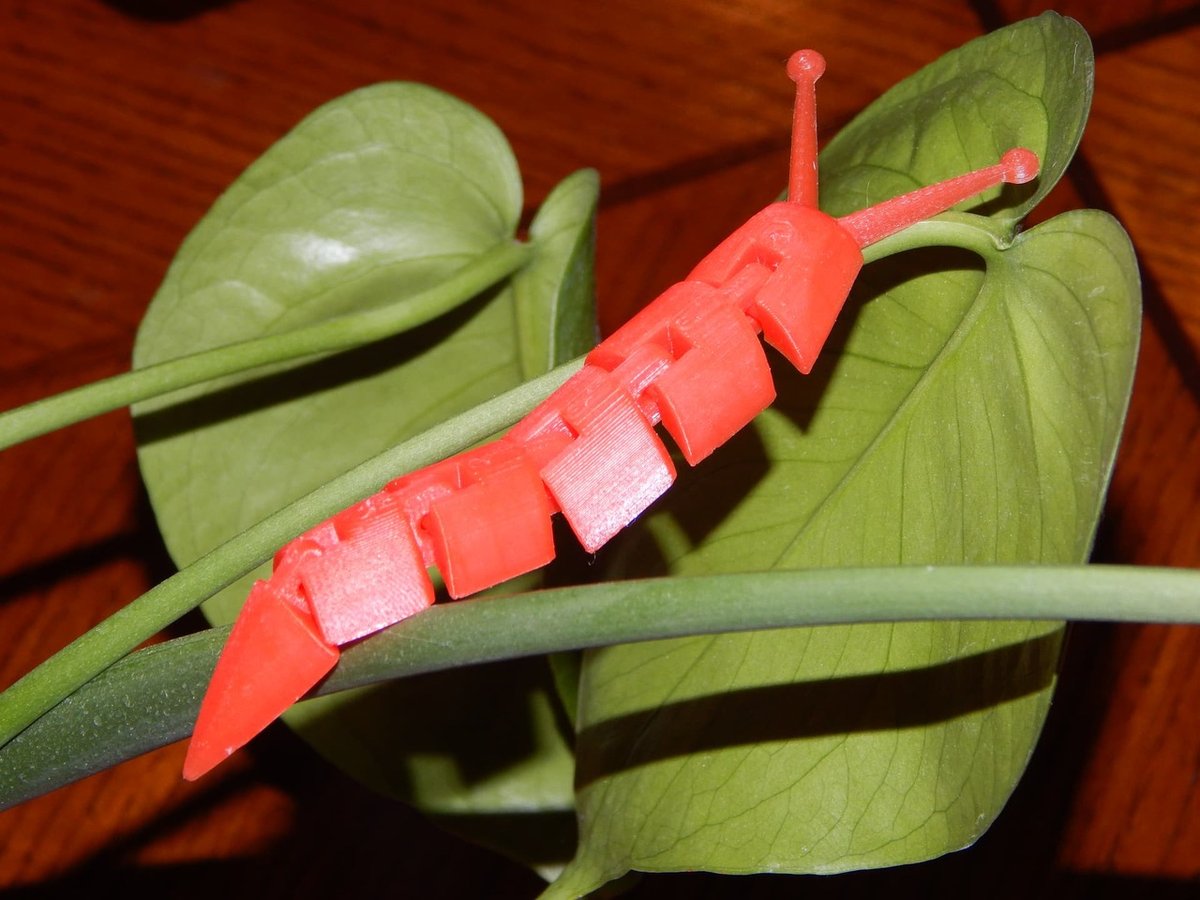
Our second test print was inspired by the color of the filament. Not unlike a sea cucumber or tropical slug, this translucent red makes for a very colorful printing experience.
The Articulated Slug by Thingiverse user Brandon Blinkenberg (8ran) is a fairly simple print but would reveal any issues with tolerances while printing.
Our slug came off the print bed looking very nice, with no issues whatsoever. All of the joints articulate fully, without catching or excess friction.
Test #3: Roll Top Bin
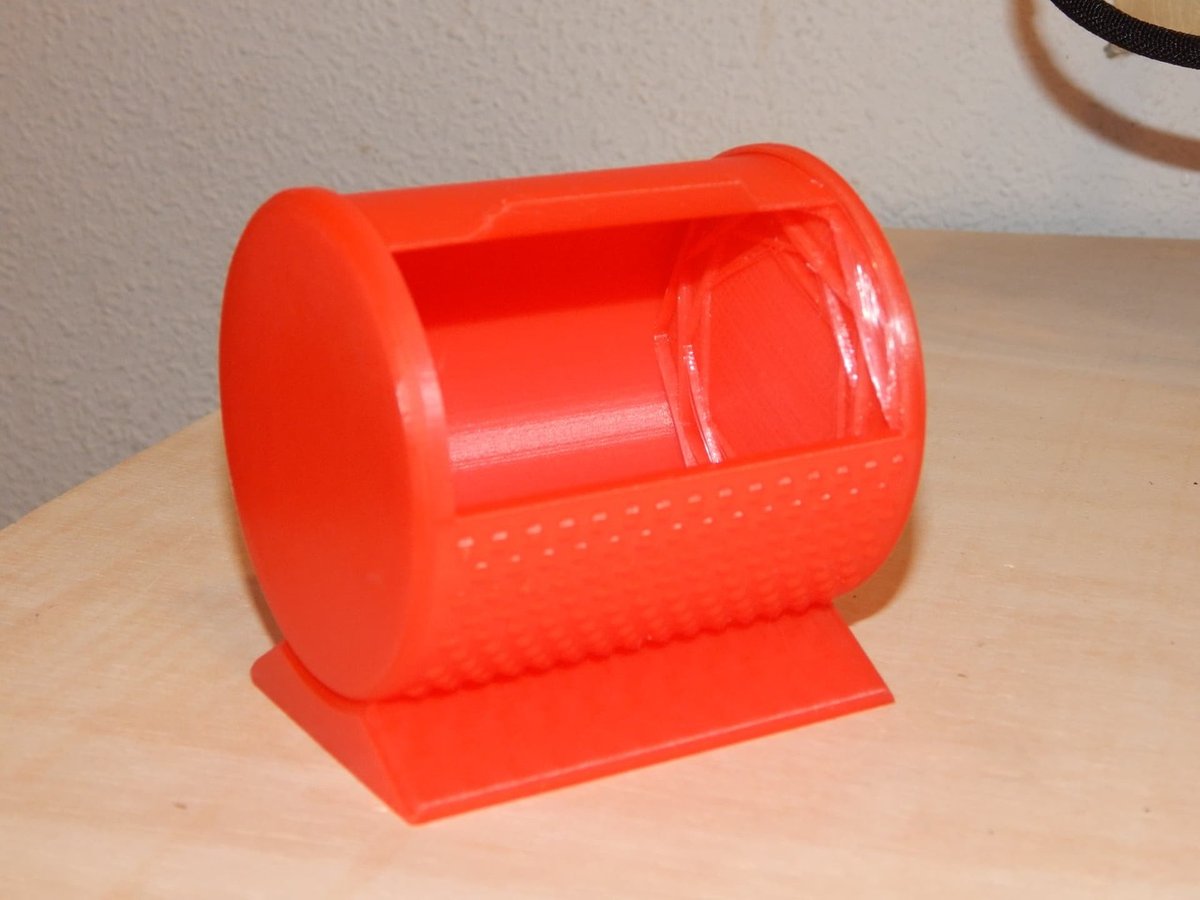
After encouraging results with the articulation in the slug, we decided to go for something a bit more complex. This Print-in-Place Roll-Top Bin, by Jeff Kerr (LoboCNC) features a built-in sliding hatch, requiring fairly high tolerances and precision while printing.
Needless to say, we weren’t disappointed. Our roll-top bin turned out almost flawless, and the door slides very nicely with little to no excess friction.
We did find some areas on the inside of the bin where the bridging was a bit droopy, resulting in some of the above layers being slightly less-than-perfect. However, this did not affect any of the other details and is invisible when the bin is closed.
Final Thoughts
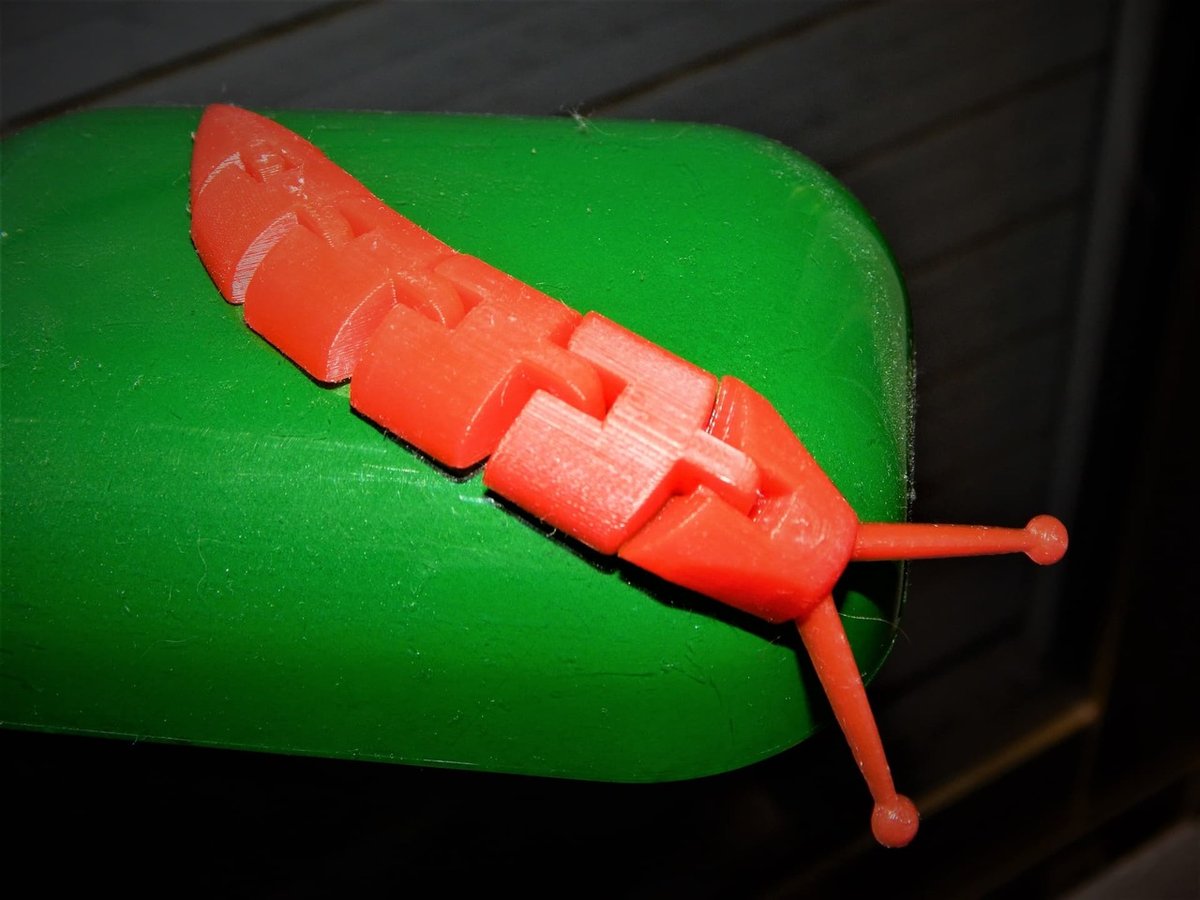
All in all, we quite like this filament. The finished models are amazing, there weren’t any glaring issues, and to top it all off, the color is eye-popping and vibrant.
Printed using the Slic3r PE presets for the MK3 and Generic PLA (with changes to the temperature settings, see below), our experience was quite smooth and hassle-free.
The built-in supports on the Roll-Top Bin snapped out surprisingly easily, and aside from a bit of drooping in a large bridge and a teensy bit of stringing between details on the Benchy, there were no huge issues.
If you want a fairly cheap material that looks good and prints without issues, this is certainly the PLA for you.
Specs & Settings

As this is a PLA, it will print fairly easily with most basic PLA profiles. However, with some fiddling, the results can go from good to great.
We printed using the “Generic PLA” and “0.15mm Quality MK3” settings in Slic3r PE, with the following changes:
- Nozzle temperature: 205 °C
- Bed Temperature: 47 °C
The manufacturer’s specs and settings are as follows:
- Nozzle temperature: 190–220 °C
- Bed temperature: 45-55 °C (not required)
- Filament diameter: 1.75 or 2.85 mm
How We Review

We review filaments using the following guidelines:
Each and every spool is brand-new and unopened.
Our first print is always a 3DBenchy; we use this to check for any inconsistencies in quality, color, and finish. After that, we print a few other models, the results of which we present to you. We do our slicing using the latest version of Slic3r Prusa Edition. We do not post-process the prints in any manner, we simply remove them from the bed and cut off any support materials.
For printing, we start with the manufacturer’s recommended settings (where available). When the manufacturer offers a range of values, we go for the arithmetic mean. Therefore, if we are given a printing temperature range of 200–220 ºC, we would print at 210 ºC (unless noted otherwise).
For this review, we used an Original Prusa i3 MK3 in stock configuration. Statements regarding print quality are based on the printer’s ability and reputation to successfully print a wide variety of other filaments and models.
We would like to mention that every spool of filament can be slightly different, and filaments often vary greatly even within a small range. Simply fiddling with a single setting like retraction can have huge effects in print quality; this can make the difference between a disastrous fail and a wondrous success. So, if you own a spool of this filament, we invite you to contribute in the comments below! Did you manage to get your prints to turn out? Did you have an interesting or strange experience? Let us know — we’d love to hear from you!
Feature image source: Emmett Grames / All3DP
CERTAIN CONTENT THAT APPEARS ON THIS SITE COMES FROM AMAZON. THIS CONTENT IS PROVIDED ‘AS IS’ AND IS SUBJECT TO CHANGE OR REMOVAL AT ANY TIME.
